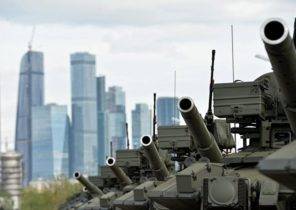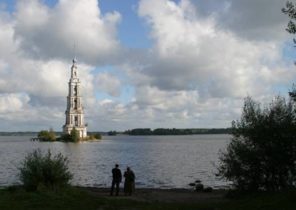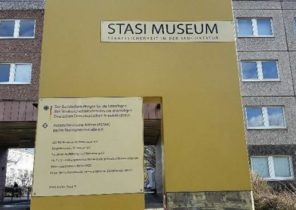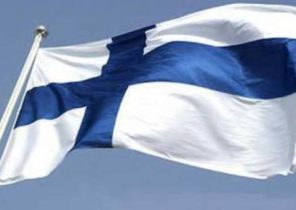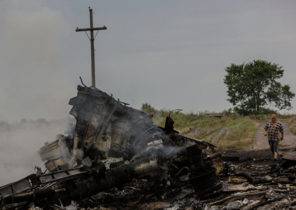
Forecast
Russia this year can come out of the recession, but in many regions will continue the economic decline.
Some regions will continue to resist the Kremlin’s policy, which exacerbated their economic problems by refusing to return the loans and accumulating large deficits.
The Kremlin will try to put pressure on the regions and their leaders, imposing internal sanctions and strict security measures.
Analysis
After two and a half years of strong recession, the prospects of the Russian economy has improved somewhat. The Russians tightened their belts, and these efforts yield results, although oil prices recovered, and the economic sanctions against Russia continue to operate as before. In fact, Russia this year can come out of the recession. In 2017, the economy is projected to resume growth, which, according to world Bank forecasts, will amount to a half percent. This is due to the budget based on more realistic oil prices and the reduction in the total amount of expenditure. Foreign investment also began to slowly return, as the rest of the world learned to act in terms of anti-Russian sanctions. Western rating agencies such as Standard & Poor’s even raised the Outlook on Russia from negative to stable.
But despite the overall economic growth, the Russian nation is still in dire Straits. A quarter of Russian companies in 2016, reduced wages, and sometimes not even paid their employees. Last year, the average wages in Russia fell by eight percent (in 2015, a decline of 9.5%), amounting to less than $ 450. This is less than the average wage in China, Poland and Romania. At the same time, the share of poor in total population has increased to nearly 15%. Regions of the country look no better, causing fear in the Kremlin.
Burdensome problem
The huge territory of Russia is divided into 85 regions, which have different shapes, sizes and names. (Two of them, the Sevastopol and the Crimea, not recognized by the international community as Russian territory, as Moscow took them from Ukraine in 2014.) According to the Russian Ministry of Finance, only 10 of the 85 official regions of Russia (mostly those that produce raw materials, but also a large city with suburbs that have a significant tax base) is stable in economic and financial terms. With 2015, the number of such regions decreased by half. Of the remaining 30 regions of the country manage to make ends meet thanks to the direct Federal subsidies, amounting to at least 33% of their income. Half of the 3.5 billion dollars of subsidies spent on the needs of 10 such regions: Dagestan, Chechnya, Yakutia, Kamchatka, Crimea, Altai, Tuva, Buryatia, the Stavropol territory and Bashkortostan. Thus, more than half of Russian regions is not able to fulfill their social obligations and requirements of the Federal government on the financing.
70 Russian regions are sent to the Federal budget, 63% of their income, leaving at just 37%. Meanwhile, the Federal government returns them to at best 20% in the form of subsidies and transfers. Over the past four years, the Kremlin has increased the amount withdrawn from the regions income by 12%, and this year may further increase by another two percent. The situation is also aggravated due to the fact that after the financial crisis of 2008-2009, Moscow has placed much of the burden of social expenditure on regional authorities. In 2011 and 2012, Putin issued a series of decrees after the third time took the office of President. He calls for various improvements in the country, from the replacement of dilapidated housing to increase the salaries of doctors and teachers. The so-called unfunded decrees added to the regional budgets of tens of billions of dollars. Just a few years ago, the country was again in a state of financial crisis.
Due to the recession and the increase in financial liabilities of most of the Russian regions had to increase the budget deficit. Rumor has it that the Ministry of Finance has allowed some regional governments in the period from 2016 to 2018, the deficit of nearly 10% on the condition that by 2019 they will return to the Kremlin’s official limit of three percent. However, in 17 regions the deficit even more than the maximum 10%. For example, the Republic of Khakassia, the deficit currently stands at 43%. To plug the holes and to Finance the growing debt, the regional government has decided to increase borrowing, appealed to the government for budget loans, get commercial loans, cash loans, issued bonds and other securities. Because the Federal budget is ever-increasing workload, the regions were more likely to take commercial loans, mainly from Russian banks. (75% of these loans are issued by the state “Sberbank”.) Although the debt figures by region are constantly changing and vary from Agency to Agency, according to estimates by Standard & Poor’s, the amount of the debt of the Russian regions exceeds $ 100 billion. If this figure is accurate, it turns out that the majority of the total Russian debt is borrowing by regional governments.
Riot regions
Trouble regions, the Kremlin does not promise anything good, and not only from a financial point of view. Throughout Russian history, the Kremlin has provided the heads of numerous regions of the country considerable autonomy as a compensation for the fact that Moscow is unable to take care of all at once. This system weakened the struggle for control over the vast Russian territory, but at the same time, ensuring loyalty of regional rulers, the Federal government was a constant headache for the Kremlin. After the collapse of the Soviet Union, dozens of regions attempted to secede from Russia or to get her more autonomy, and attempts by Chechnya to declare independence led in 1990-e years to two wars. During the financial crisis of 1998, many heads of regions have refused to the demands of the Federal government on the allocation of funds, putting at the forefront the financial survival of their own territories.
Today, the Kremlin is faced with a similar problem. At the end of 2016 from 25-plus regions the ratio of debt and income exceeded 85%, and in Mordovia it was close to 200%. Moreover, regions that have no other way to economic recovery in addition to increasing borrowing. Such solution is hardly suitable. According to estimates by Standard & Poor’s, this year only on repayment of debts of the regional governments will have to borrow another $ 20 billion. Seven regions were on the verge of financial instability because of the large deficit and the ratio of debt and income. But the Kremlin just as before requires more money. Today, many regions are starting to resist.
Increasingly, regional authorities are not able to pay Federal and state Bank loans. The Ministry of Finance acknowledged that over the past two years, more than a dozen of the regions stopped the repayment of government loans and four regions refused to comply with its obligations under foreign loans. Strengthening the financial burden provoked a negative response on the part of some regional leaders. On December 27 Tatarstan President Rustam Minnikhanov has condemned the Kremlin’s plans to increase the pumping means from the regional budget, calling them “extremely dangerous” and sample “nonsense”. He even compared the current economic policy of Moscow with Stalin’s program of collectivization, under which the Soviet government took away land from private owners and handed them over to collective farms, which became a real disaster. In the process of collectivization killed millions of people. Responding to a tirade Minnikhanov, which was shown on national television, Prime Minister Dmitry Medvedev warned him that “Tatarstan should know their place”.
Moscow is looking for answers
Unless you count the reprimands Medvedev, the Kremlin’s reaction to economic turmoil and discontent in the regions was mixed. Putin said at the December press conference called it a serious problem an increase in regional debt, but put all the blame on the regions that violate the rules of the Federal government’s deficit. Meanwhile, the Ministry of economic development proposed to increase this year financial support to the regions by nine percent ($30 billion). This is a huge increase compared with the 300 thousand dollars, which are incorporated in the current budget. But Moscow has not adjusted its budget and instead intends to impose on the regions of more rigid economic policy. Putin demanded that the Minister of Finance Anton Siluanov to 2019 to implement the new budget code to force to set standards for the ratio of regional deficits and debt. Those regions that refuse to obey the new rules will be subject to sanctions (though unclear how). The plan quickly found a positive response among the deputies of the State Duma.
At the same time, Moscow is increasing the pressure on regional leaders. In less than two years on corruption charges was arrested three governors. One of them, the former head of the Kirov region, was associated with the liberal technocratic elites that the Kremlin has in recent years systematically exposes the persecution. But another the deposed Governor, who led the Komi Republic, was a member of Putin’s party “United Russia”. Russian media reported extensively on each of these arrests, showing laid on the tables wads of cash, diamond-encrusted fountain pens and fine gifts that the leaders allegedly presented escorts. January 23, Putin has dealt another blow to regional leadership, signed the law requiring all governors to disclose information about their property and income. In addition, although the Kremlin regularly interfere in gubernatorial elections this year, he brought to power in the regions a record number of representatives of special services. Putin also began to appoint judges to the provincial and district courts, to weaken the power of governors.
Pretty broken the Kremlin’s reaction to the outrage in the regions, partly due to the struggle that the Russian intelligence services are for the oversight of regional policy. In 2016, the Federal security service (FSB) has developed a new system of assessment of activity of governors, which at least in principle, based on the indicators of economic stability of the regions on the results of the election on the measure of confidence of the Kremlin to them. Shortly thereafter, the Federal security service (FSO), which is blindly loyal to Putin and in recent years feuding with the FSB, has created his own system of assessment of activity of governors and the stability of the regions. Putin ordered his personal troops, called the National guard, along with members of the FSO to take to the streets and to assess the satisfaction of the local population to its regional leadership, while the FSB has started to strengthen its presence in the various regions.
Financial instability, which became a real scourge for the Russian regions, in equal measure, is the result of the difficult economic situation of the country and struggle for power that split the Kremlin. Although Moscow has the means to prevent and resolve financial crises in the regions, she can’t decide how to do it the best way. And while the Federal government resolves its internal disputes, subjects of the Russian Federation would not be of much.
